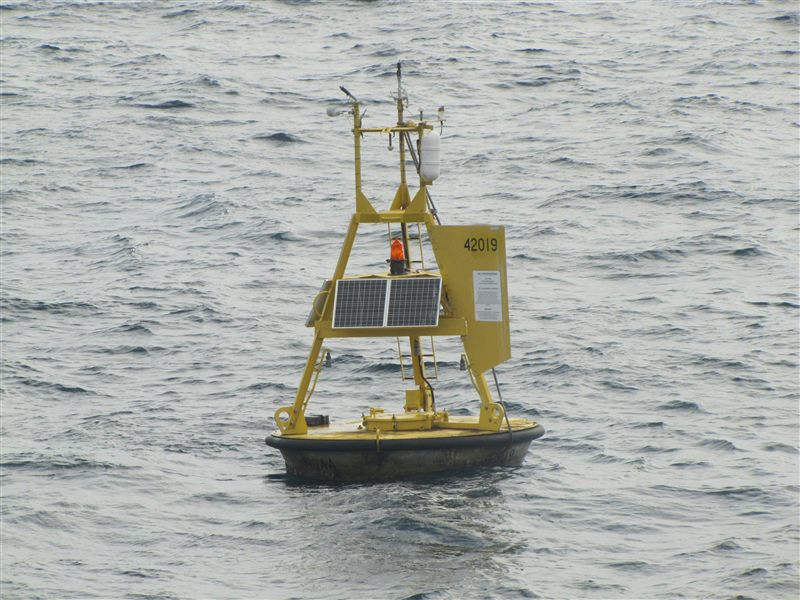Weather Channel, NOAA Feature Study on Gulf of Mexico Warming
February 3, 2023

A meteorological buoy in the western Gulf of Mexico. Credit: Officers and Crew of NOAA Ship PISCES; Collection of Commander Jeremy Adams, NOAA Corps.
Oceanic warming occurs around the world, but its ecological and economic impacts vary by region. To understand warming in the Gulf of Mexico and its regional consequences, scientists with the NOAA National Centers of Environmental Information (NCEI) and the Northern Gulf Institute (NGI)/Mississippi State University analyzed 50 years of temperature profile data publicly available in the
World Ocean Database.
The study quantified a warming trend in the Gulf of Mexico, with sea surface temperatures increasing approximately 1.0°C (1.8°F) between 1970 and 2020 or approximately 0.19°C (0.34°F) per decade, which is twice the rate of warming in the global ocean near the sea surface.
The study captured the attention of the Weather Channel, who highlighted the study in their broadcast of
The Gulf Of Mexico Is Getting Warmer, Increasing Risk Of More Intense Hurricanes. NOAA also featured a summary of this study in an NCEI article
The Gulf of Mexico Is Getting Warmer.
The authors hope their research will inspire more investigations on understanding the relationship between warming and environmental issues in the Gulf of Mexico.
Zhankun Wang, Tim Boyer, James Reagan, and Patrick Hogan published their findings
Upper Oceanic Warming in the Gulf of Mexico between 1950 and 2020 in the January 2023 American Meteorological Society's Journal of Climate.
By
Nilde Maggie Dannreuther with the Northern Gulf Institute (NGI), Mississippi State University (MSU).
The
Northern Gulf Institute is a NOAA Cooperative Institute comprised of six academic institutions located across the US Gulf Coast states that conduct research on the interconnections among Gulf of Mexico ecosystems (environments, habitats, resources, and people) and outreach for decisions based on these interconnections.
